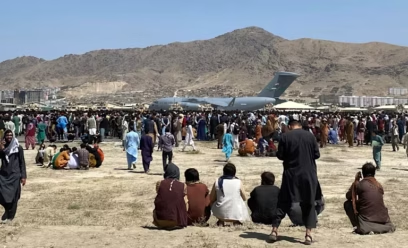Demystifying Narrative Change: How IMIX helps the sector shift the story in a hostile climate
Posted by IMIX on November 26, 2025
At IMIX, we spend a lot of time talking about narrative change. What it is, why it matters, and how the migration and refugee sector can do it with intention. But before we talk about methods or stages, it is important to name the reality we are working in.
We are operating in one of the most hostile environments in recent memory. Government rhetoric continues to dehumanise people who have moved to the UK, social media platforms are overwhelmed by far-right narratives and disinformation. Large parts of the media landscape amplify fear-based stories that make everyday life harder and more dangerous for racialised and migrant communities.
In this climate, the question is not whether narratives matter – they shape policy, public opinion and people’s daily experiences. The real question is how we, as a sector, can influence those narratives in ways that are rooted in truth, dignity and humanity.
Narrative change is not something separate – it’s what we already do
People often imagine narrative change as an academic exercise or a technical strategy reserved for communications professionals. But in reality, it’s much more familiar.
Narrative change is happening whenever someone challenges a harmful myth in a conversation, shares a lived experience story, supports a journalist in reframing a headline, or helps a community understand an issue with empathy rather than fear. It’s the ecosystem we all contribute to, whether we call it “narrative work” or not.
Our role at IMIX is to bring clarity, structure and support to this shared effort, to help the sector do it intentionally, not accidentally.
To do that, we follow a series of interconnected stages. They aren’t steps in a straight line, but parts of a cycle – a cycle that makes narrative change possible, repeatable and sustainable.
1. Putting the right messengers at the Centre
The starting point for narrative change is not a message – it’s a person.
People who have experienced migration themselves often carry the stories that can shift how others understand the issue. They bring nuance, truth, and a perspective that can cut through fear or misinformation. Supporting people to share their stories safely, confidently and on their own terms is one of the most important parts of this work.
Alongside lived experience voices, there are many others who play essential roles:
- frontline staff, who see the realities of the system every day
- community leaders, who hold trust within their networks
- allies, sometimes from unexpected places, who can speak to audiences the sector struggles to reach
Taken together, they help make the migration story more relatable, more human and more grounded in real life.
2. Learning how people hear and understand stories
Narrative change isn’t only about what we say – it’s about how people receive it.
Research helps us understand the values, worries and hopes that shape people’s views. Tools like focus groups or message testing show us which stories open people up, and which make them shut down. This isn’t about manipulating people; it’s about listening carefully and learning how to meet people where they are.
Framing also plays a key role. The way we structure a story – the values it appeals to, the context it gives, the language it uses – shapes what people take from it. Evidence helps us choose frames that build understanding rather than deepen divides.
3. Making narrative work something everyone can do
Narrative change becomes powerful when it’s shared.
Communications shouldn’t sit in a corner – it should be part of everyday work across organisations and communities. That means helping people feel confident talking to the media, reframing a difficult conversation, responding to an online comment, or explaining an issue in a way that connects rather than confronts.
Workshops, training, mentoring and simple tools help people build these skills in ways that feel doable. Narrative change is not about being polished – it’s about being human, consistent and intentional.
4. Connecting stories to the wider system
Narratives don’t exist on their own – they sit alongside policy debates, public conversations and the assumptions society holds.
Human-centred stories can challenge harmful assumptions, highlight the real impacts of policies, and create more space for empathy in political discussions. Narrative work isn’t a replacement for policy work, but it can help create an environment where fairer and more compassionate decisions become possible.
In this sense, stories help shift not just opinions, but the systems built around them.
5. Working with the media to tell fuller stories
Journalists and editors play a big role in shaping the public understanding of migration. Many want to tell accurate, balanced stories but face tight deadlines, high pressure and limited context.
Building long-term, constructive relationships with newsrooms helps create more space for human stories, more care with language, and more confidence in tackling complex issues. Sometimes that means helping place a story; sometimes it’s simply offering clarity in a fast-moving moment.
Small, consistent interactions can make a big difference over time.
6. Sharing tools that make the work easier
Narrative change becomes sustainable when people have something practical to work with.
Message guides, templates, communication tips, safety advice, content frameworks – these are the kinds of tools that help people apply narrative principles day to day. They don’t replace human work, but they make it easier and more manageable.
Good tools help people feel prepared rather than overwhelmed.
Narrative change isn’t about winning arguments – it’s about creating space for dignity, understanding and human connection in a conversation too often shaped by fear. When stories come from people with lived experience, backed by research and shared through trusted relationships, they can gradually shift how society sees migration. And as culture shifts, policy can shift with it.
This work isn’t owned by any one organisation. It’s something the whole sector – and the wider community – contributes to. Every honest conversation, every story shared with care, every harmful myth gently challenged plays a part. Narrative change is slow, patient work, but it is also deeply hopeful.
It’s not a communications extra; it’s the cultural groundwork for fairer, more humane decisions. By centring lived experience, learning from evidence, building skills across the sector, supporting better media coverage and offering practical tools, we can collectively reshape the public conversation for the long term.
At its heart, narrative change is about human connection – and making sure this work belongs to everyone working toward dignity, justice and shared humanity.



